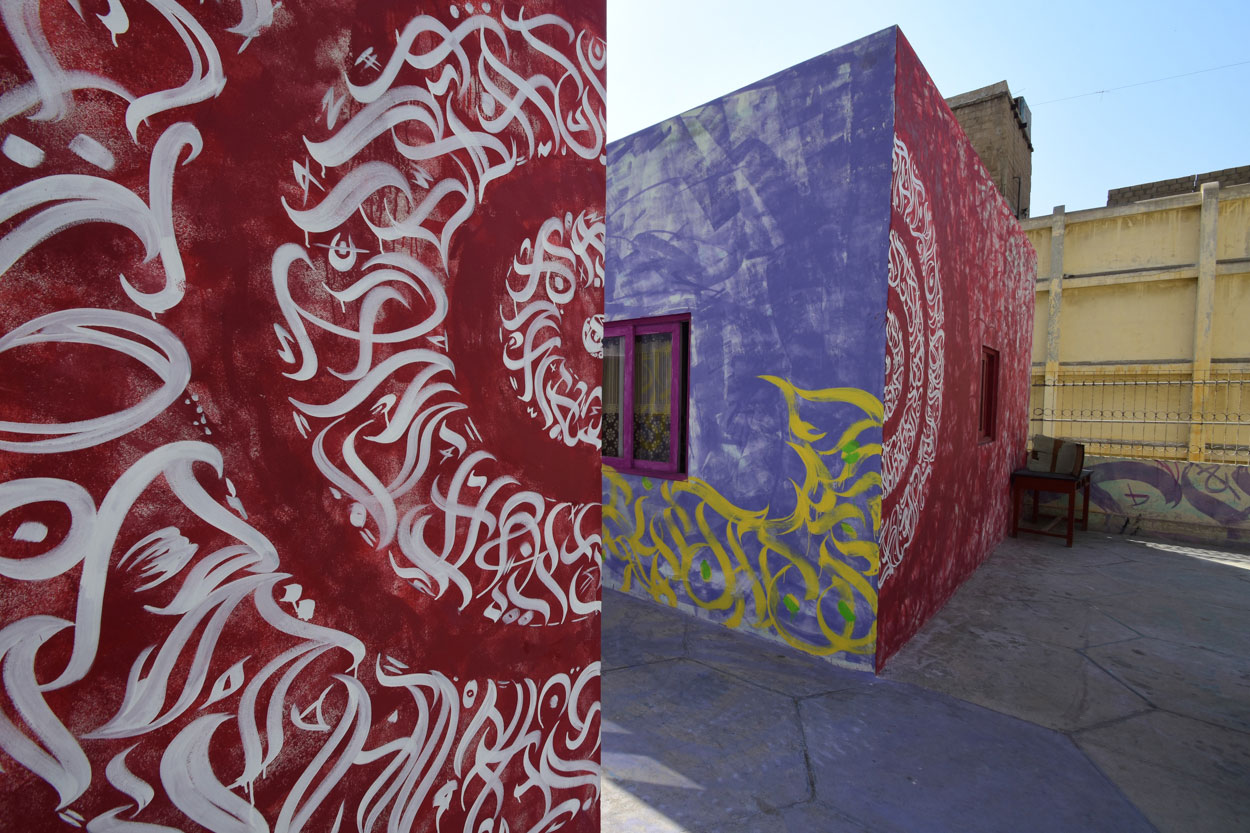Sanki King
Born in 1990 in Jeddah (Saudi Arabia)
Lives and works in Karachi (Pakistan)
Sanki King is a self-taught street artist, pioneering the bourgeoning discipline in Pakistan. He is a member of two of the most respected graffiti crews in the world: BMK (Beyond Mankind Krew), established in 1991 in Queens, New York; and Ex-Vandals (Experienced Vandals), established in 1978 in Brooklyn, New York. Since 2012, Sanki King has produced some of the largest single-artist works of graffiti in Pakistan, creating work in seven different languages to date. In 2015, his work was published in a book of global street art, Street Messages by Nicholaz Ganz, which also includes the artwork of world-renowned street artists, such as Banksy, El Seed and Ben Eine. He has also given a number of talks around Pakistan, most notably at: the Young Leaders Conference, Karachi; TEDxNustKarachi; and TEDxNEDUniversity. Sanki King’s work has been exhibited at Sanat Initiative Gallery, Karachi; VM Art Gallery, Karachi; the 1st Sindh Literature Festival, Karachi and Soul Patch, Mumbai. King will feature in Season Three of Interrupt This Program, an award-winning Canadian series of television documentaries exploring ‘underground’ art scenes. King’s artistic practice derives its inspiration from textual structure, linguistics and literature, manifesting itself in an ever-modulating style which could most often be described as a kind of futuristic street calligraphy.
In Sanki King’s site-specific project, Mind Palace, which inhabits and unfurls itself across the rooftop of The Theosophical Society, he has taken the location and its interaction with his graffiti to be a representation of his mind, deliberately exposed and made public. In fact, the architectural context of the rooftop, as surrounded by dilapidated apartment blocks, entails that the audience for the work is very much the public – the local residents who have witnessed the entire process of the realisation of King’s work. The painting, osmotically diffused throughout the rooftop’s topography, is based on writings of King’s own composition, collectively entitled Freedom of Thought. The work openly enters into multifarious dialogues: with its setting and the context of Karachi; with the concept of exhibition space; with preconceived definitions of art genres, especially street art and calligraphy; and with the viewer, in that it allows them access to the artist’s internal thought process, creating a discourse between the two divergent internal perspectives. The viewer, in a literal sense, is able to enter, walk and exist within King’s artistic representation of his consciousness, his psyche, his Mind Palace.

Mind Palace, 2017.
Grafitti

